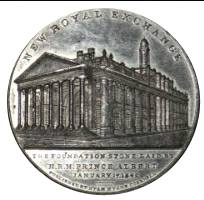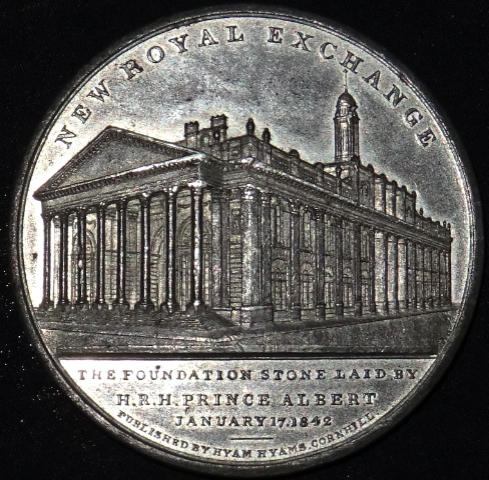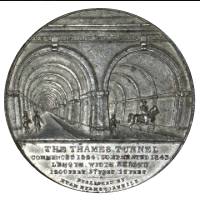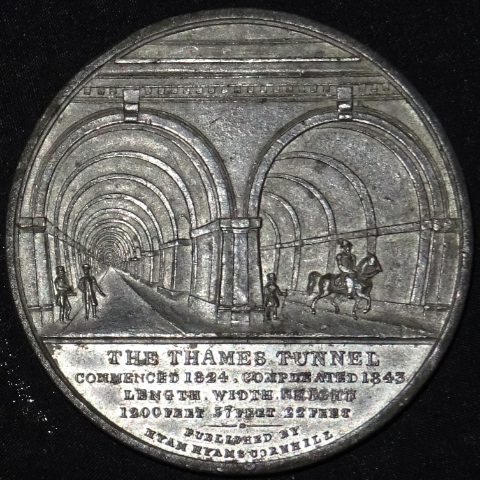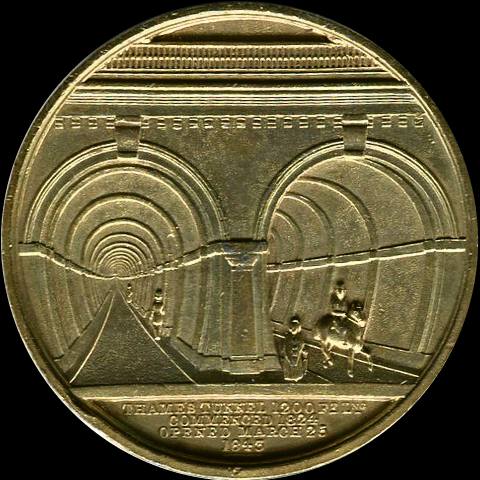Thames Tunnel
With the growth of river trade in the 18th century, when London Bridge was the easternmost crossing. the need grew for a new link between the north and south banks of the River Thames. Proposals for tunnels between Gravesend and Tilbury (Ralph Dodd, 1799) and the Thames Archway Company scheme (Rotherhithe to Limehouse,1805) failed but after patenting a revolutionary new tunnelling shield in 1818 the French born engineer Marc Brunel proposed, in 1823, a tunnel between Rotherhithe and Wapping about half a mile upstream of the 1805 scheme. The Thames Tunnel Company was formed in 1824 and work commenced in 1825. Progress was slow and work was halted for seven years after a major flood in 1828 which nearly took the life of Marc Brunel's son Isambard Kingdom Brunel. In 1834 Marc Brunel managed to raise enough money (including a loan from the Treasury) to start work again and the tunnel was finally completed in 1842. After more work, to enable easy pedestrian access, the crossing was opened to the public on 25th March 1843. Pedestrians paid 1d to cross but the planned equestrian and vehicular access was never completed. The tunnel was sold to The East London Railway in 1865 and is still in daily use now as part of TFL's Overground system.
It was possible to visit the tunnel during much of its construction and the sale of souvenir books helped pay a small part of its costs. A large number of medallions were issued to either celebrate its opening or sold to visitors. I have found no record of any medal dated before 1842, most are dated 1843 and a few 1846.It is clear from regular advertisements in the newspapers that people could enter at Rotherhithe and view the tunnel for many years before the completion of digging, which is probably why there are medals saying “opened” or “completed” from both 1842 and 1843. A March 1843 shareholders' report stated that there had been 40,000 tunnel visits during the previous year. Some of the small brass medallions may have been sold by street vendors, rather than in the tunnel, as Mayhew's London Life and the London Poor (1861) says that there had been in the recent past a considerable trade in such items, now much diminished.
























































